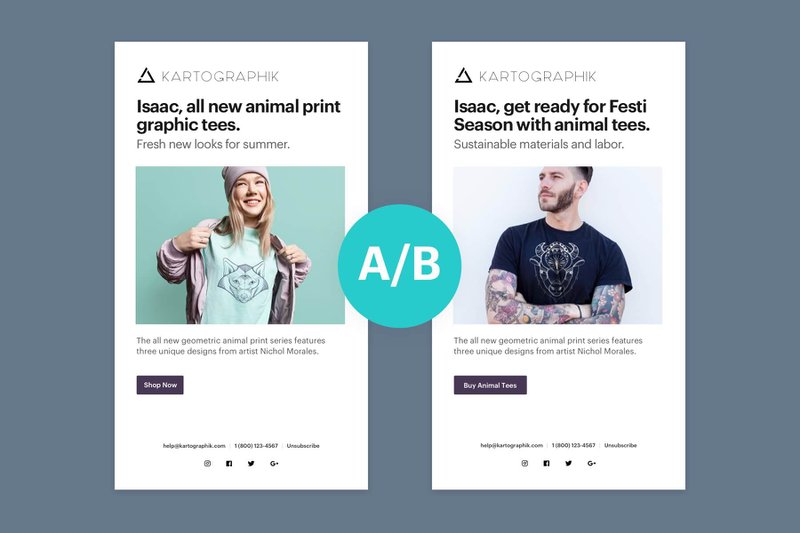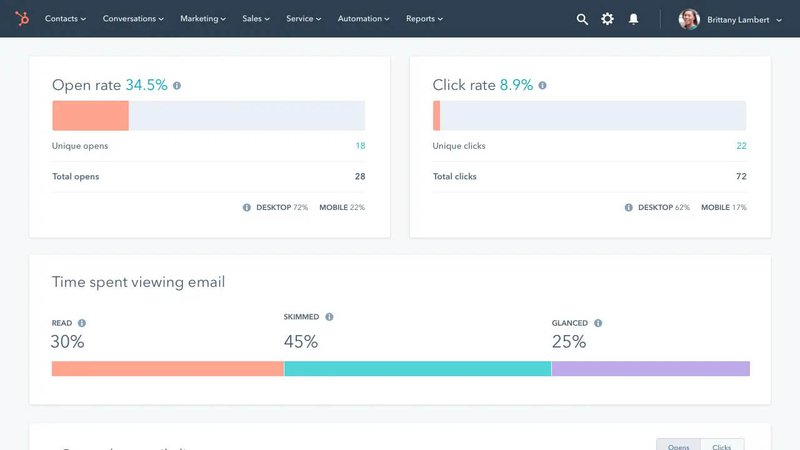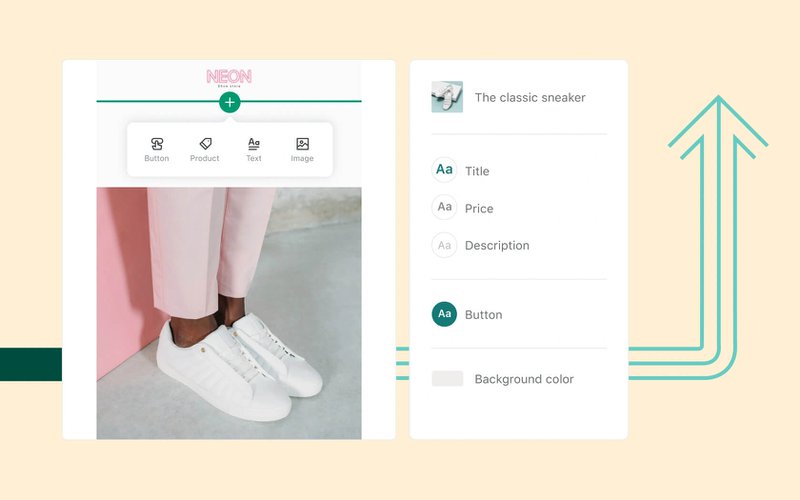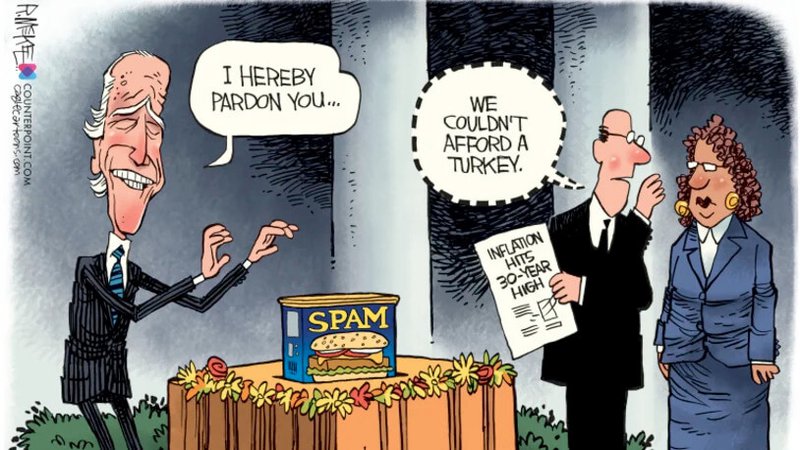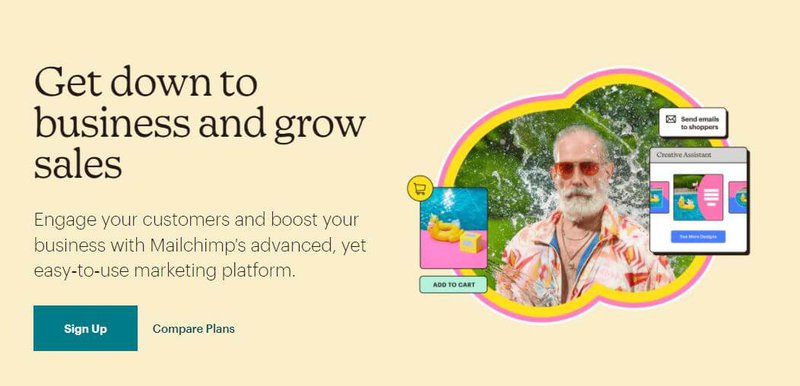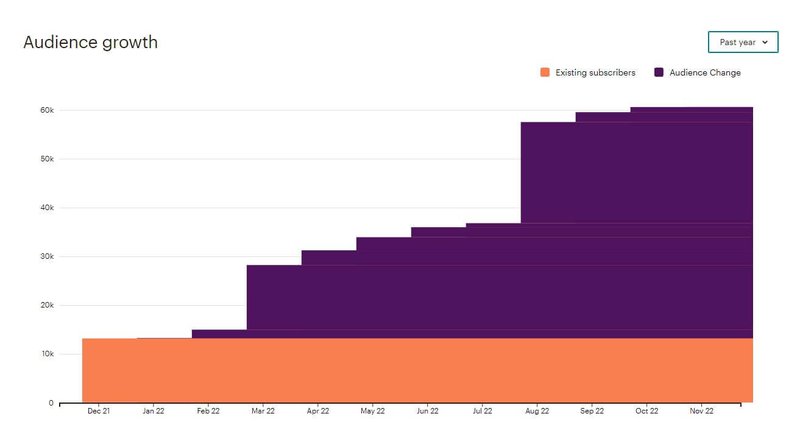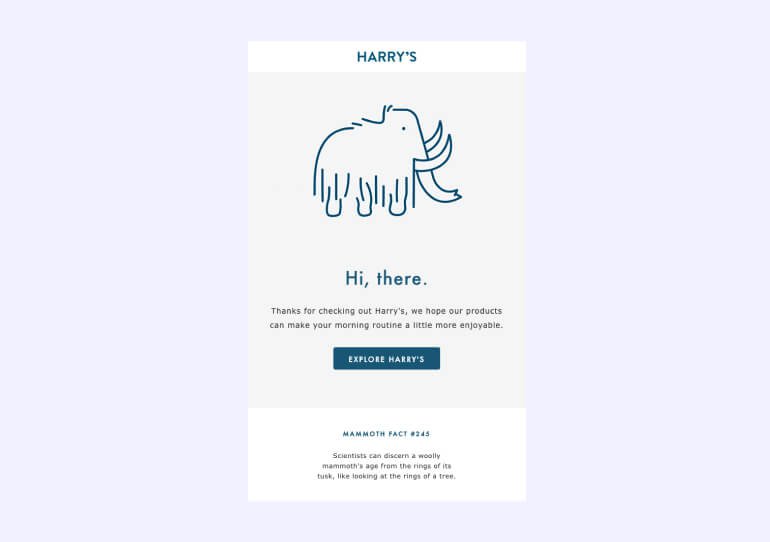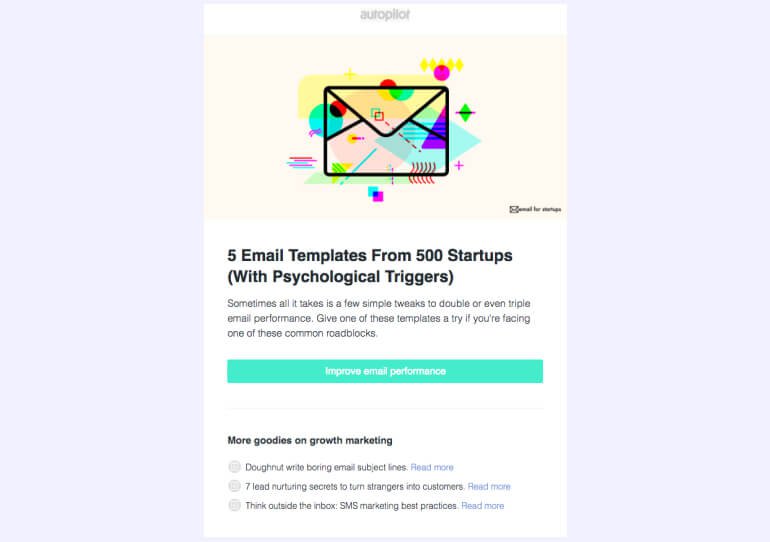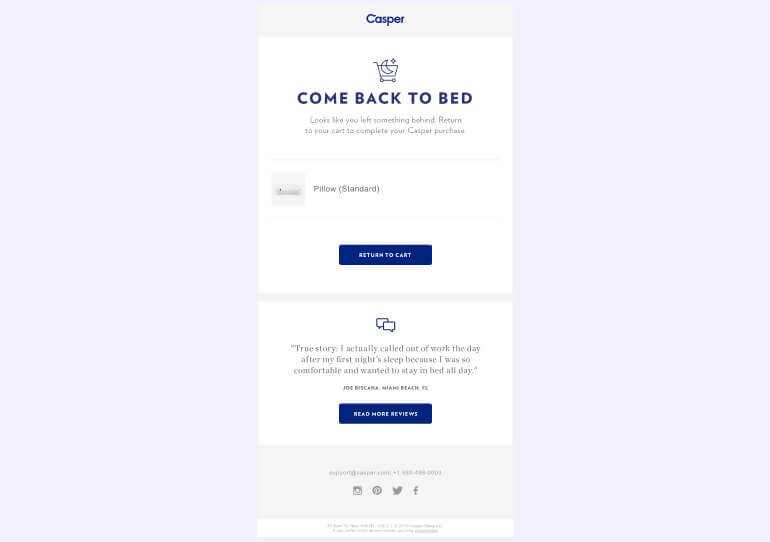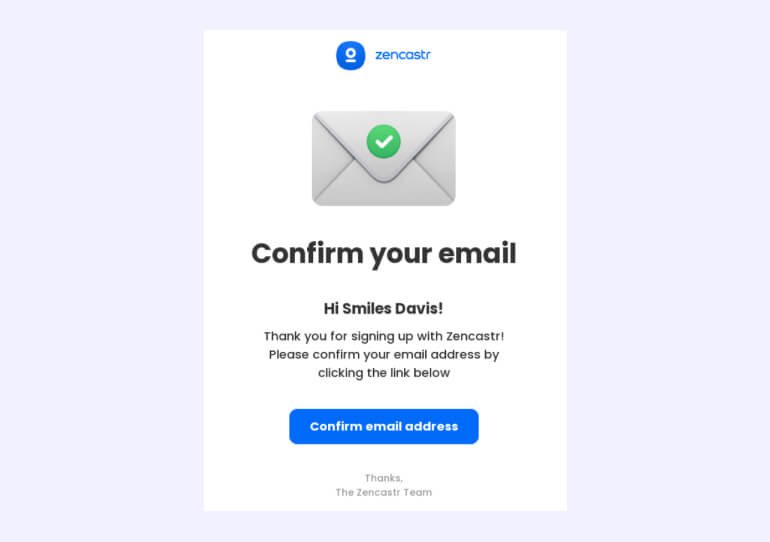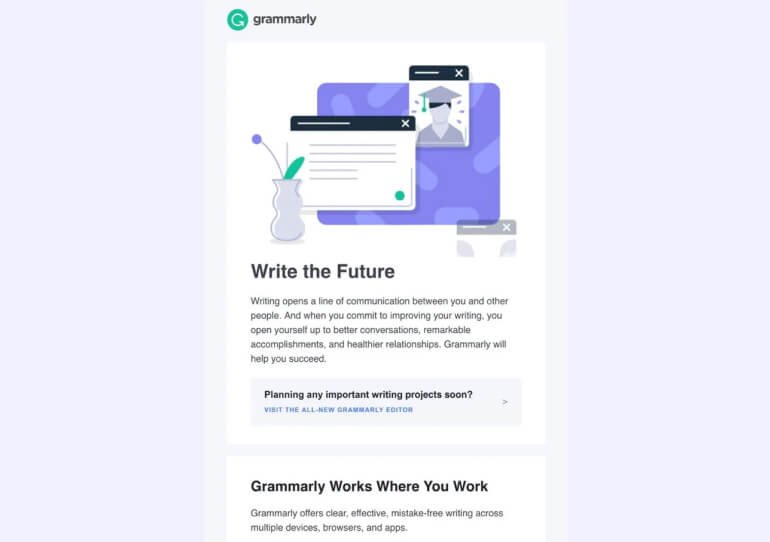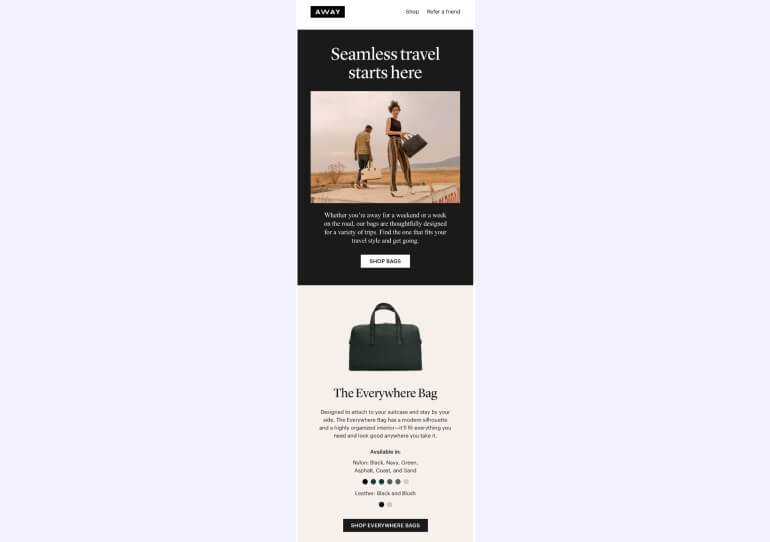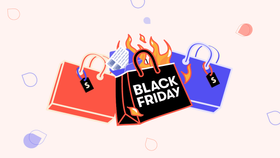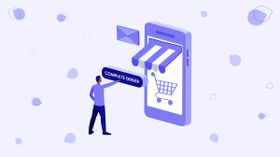What is Email Marketing: The #1 Ridiculously Easy Way to Grow Your Business
The most comprehensive guide on email marketing: what it is, types of email campaigns, email marketing KPIs, and the best email marketing strategies to use.
Updated November 5, 2024.
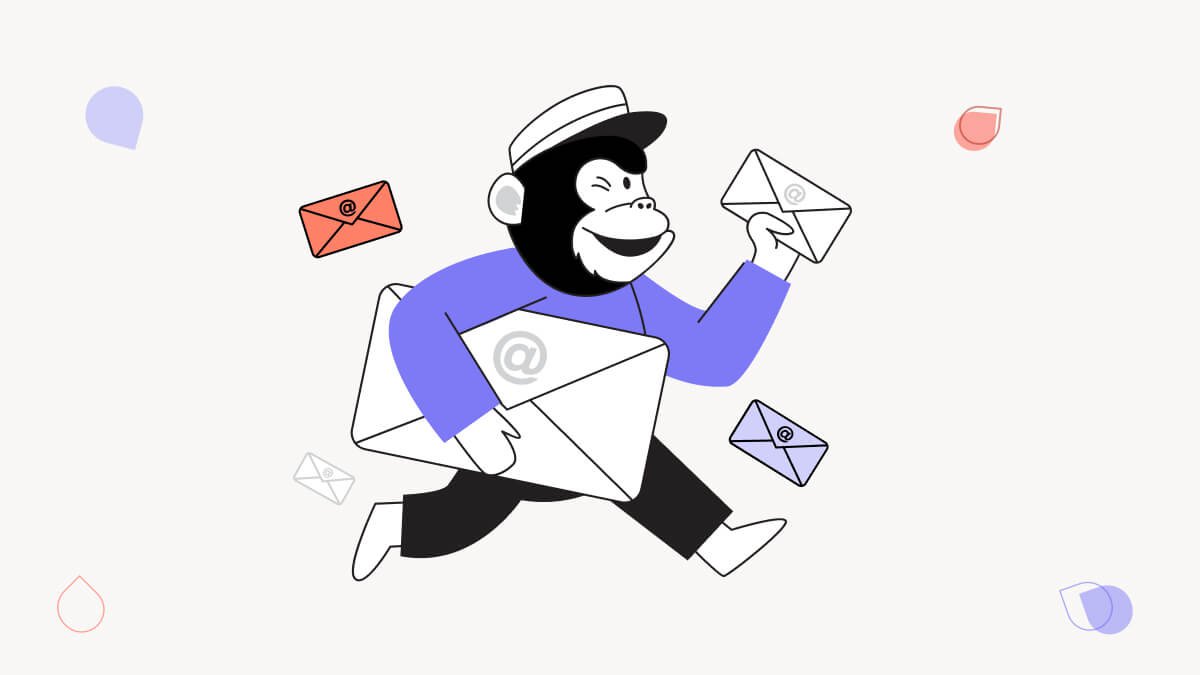
Cinderella asked for a pretty dress and a carriage. Founders ask for the most efficient and lucrative ways to make money on autopilot.
While we don’t have a magic wand, we have the next best thing: the complete guide to email marketing. So open your marketing planners, and let’s get this party started.
In this post, we cover what email marketing is, how to get started, the types of campaigns you need to send, and how to use it to scale your business.
Let’s dive in.
What is email marketing?
Email marketing is a powerful marketing channel that helps businesses promote their products or services. It is one of the most popular and cost-effective forms of marketing on the planet and can help you engage with your customers, and educate them on your brand, which helps you sell to them better.
Email marketing easily fits into your entire digital marketing strategy as it helps you with things like lead generation, brand awareness, and keeping your customers in the know.
Why is email marketing important?
Email marketing is a money-printing machine for brands that use it well. According to a survey carried out to marketers worldwide in 2020, it was found that on average for every dollar invested in email marketing, companies make $36 in revenue. In eCommerce, that number is even higher, with $45 generated for every dollar spent.
Email marketing is truly a digital asset when you leverage it. A good email strategy gives you traffic and sales diversification, and the ability to create your own audience that you can communicate to whenever you want and however you want to.
The advantages of email marketing
All of this sounds good, but what can I really do with this email thing? Don't fret, here are some of the best advantages of email marketing for your business:
Helps build relationships with your audience
Email marketing helps you build personal relationships with your customers. It’s not about generating instant sales from a single email but rather providing value to each customer.
By crafting personalized emails that are relevant, you’re establishing trust and credibility with your leads and customers, ensuring they come back again. Sharing your brand and product story can help build customer loyalty and increase your LTV in the long term.
Helps drive traffic to your blog, store, or landing page
Emails can generate a lot of traffic for your online assets. Whether you’ve written a blog post, have a new product, or are highlighting a specific service - you can send your email subscribers right to where you want them to go.
You control the message your audience sees
You’re in charge of the narrative. An email can be designed precisely how you want, right down to the last period. Show off what you need to, it’s your place to shine!
Segment your audience
Segmenting your email lists into smaller, targeted groups lets you send more personalized messages that usually have higher engagement rates and better returns. It’s all about sending the right message to the right segment.
Personalize your message and offer
It’s never been easier to send an email that is personalized to each potential customer. Someone looked at a product but never bought it? Personal email! Someone added to cart but never bought anything? Personal email!
Incredible analytics
Most email marketing tools let you analyze every part of your email. You can look at the various metrics on each campaign, including:
- Click-through rates - how many people clicked on your email
- Opens - who opened the email
- Unsubscribe rates - who unsubscribed
- Bounce rates - all the emails that were not delivered
- Spam rate - how many emails landed in the recipient's spam folder
- Conversion rate - how many conversions you had from the email
This kind of granular analytics helps businesses optimize their email marketing campaigns and scale the channel.
Integrates with any eCommerce platform
Most email marketing software integrates directly with eCommerce platforms such as Shopify or WooCommerce. This lets you track the entire customer journey from email to sale and helps you integrate email into your broader omnichannel marketing strategy.
Automated email flows
As mentioned, once you know where your customers are going and what actions they are taking, put your emails on autopilot. This lets software handle the customer journey for you, just set it up once, and the rest drives on its own!
Those are some of the benefits of email marketing. Now let's talk about the drawbacks.
The disadvantages of email marketing
There’s a yang to every yin, so there are a few drawbacks to email marketing. Here are some things to keep in mind:
Avoid spam
Chances are, you’ve received messages from an exotic prince eager to give his wealth away. Email spam doesn’t stop there, though.
From promises to lose 100 lbs in 10 days to clicking the big red button for the biggest discount of your life, spam is an ever-present part of the email marketing anatomy.
Spam is simply unsolicited emails that are sent in bulk to a list of people (see the CAN-SPAM Act). And unfortunately, even if you never have any intention of sending spam to your subscribers, you may end up in spam inboxes. The key is to actively avoid spam filters and practice good list hygiene.
Everyone uses email
It’s a great marketing channel, and competition is fierce. You’re not the only one in your customers’ inboxes, so you need to work hard to grab attention and stand out.
That means you need to invest in talented and capable copywriters who tell compelling stories – you know, the ones your audience will look forward to reading. You also need to pay attention to your subject line.
Tip: Use a tool like Klaviyo’s new subject line assistant to write compelling email subject lines.
It's less personal
Email marketing is usually done in bulk and although you can personalize your emails based on different data points, it still can be less personal than other marketing channels. With social media marketing, for example, you can interact more actively with each member of your audience.
Design is limiting
Because you can access email across a wide range of devices and screens of all sizes, your customers might see a less-than-ideal version of your email campaign. If your email is hard to read it can quickly end up in the trash bin (is that a term people use still?).
A brief history of email marketing
Take a step into the time machine and welcome to 1971, where a few important things are happening: the voting age in the USA is lowered to 18, The Walt Disney World Theme Park is opened, and the first email is sent.
Much like the first telegraph or phone call, the first email marked a historic moment in the evolution of communication. The message itself didn’t match the grandeur of the event, however, as the text of that first email was "something like QWERTYUIOP."
The email was sent by computer engineer Ray Tomlinson as a test message to himself (he had the right idea, though, that’s a practice every marketer should keep up with before sending any email campaign).
By the 90s, the internet became available to the masses and marketers loved the new way of communicating their promotions. As peoples' email inboxes started filling up with spam, governments started regulating the industry. So new laws and regulations emerged to protect users from spam and unsolicited communication, like the General Data Protection Regulation (GDPR).
Email Marketing Glossary
If you’ve felt like trying to learn a new language when you started making sense of email marketing, you’re not alone. Email marketing jargon is ample but important. Here are a few basic terms to know:
Subscriber
An individual who has signed up to receive emails from you, either through an explicit sign-up or as part of a transaction. Treat them with respect and care.
Opt-in
To opt-in or subscribe to an email list is to choose to receive email communications by giving your email address to a company, website, or individual, and with that giving them permission to email you.
List
A list of email addresses that your business can send marketing emails to. Email lists are usually segmented—or split into smaller groups based on their interests or behaviors—so you can customize your messaging to be more relevant, interesting, and effective.
Segmentation
Grouping customers together based on subscriber attributes, past actions, or other data points in order to send more highly targeted and personalized campaigns.
Email campaign
An email campaign is one email (or a series of emails) sent to achieve a specific goal for the marketer.
Automation/Flow
The use of predefined rules to trigger email messages based on specific actions subscribers take. Your subscriber welcome, cart recovery, and order confirmation emails are examples of email flows.
If you're just setting up your account, you should always start with your email automation flows because they are easy to “set and forget”, and make you sales in the background.
Landing page
A landing page is a standalone page that a potential customer lands on after clicking on your email. This page lets you craft the exact message you want to portray along with the exact actions you want the customer to take.
Use concise copy and clear messaging to get your readers interested in what you are offering and turn them into buyers.
How email marketing works
Now that you’ve gotten a grasp on everything that email marketing can do for your business, how do you start sending out emails? Follow these three easy steps to get started:
Get an email list
Spoiler alert: you cannot email just anyone. You need to have explicit or implied consent to email an individual. Some of the easiest ways to start growing your email list are:
- Set up a subscriber form on your website
- Use an exit-intent popup
- Share an email sign-up link on social profiles
- Create social media ads targeting potential subscribers
Sign up for an email tool
There are so many tools that simplify the entire email marketing process, from segmenting your audience to sending automated emails, to generating detailed reports.
Here are some of our top email marketing platforms:
- Klaviyo: the best Shopify email marketing integration tool, with access to crazy good analytics and segmentation
- Mailchimp: ranked best overall, easy to use, and the free version is great.
- Hubspot: very user-friendly interface for first-time users
- Active Campaign: a favorite for automation
- Drip: another great tool for eCommerce brands
Check out our guide to the best email marketing tools and why we love working with them. And if you’re undecided between Drip and Klaviyo, we’ve got you covered too: here’s a guide on Drip vs Klaviyo, to help you decide on what’s best for your business.
Need help setting up Klaviyo to make the most of its capabilities? Hire a Klaviyo agency or Klaviyo marketing expert now. Contact Mayple and allow us to match you with a trusted, vetted email consultant in a matter of days.
Grow your list
The more high-quality subscribers you have, the more revenue you get. In order to run successful campaigns, do some A/B testing, and hone your messaging.
Ways to grow your list
Here are 3 ways to grow your list that you absolutely shouldn’t skip on
- Subscriber: pop-up on the website or subscriber box. This lets website visitors opt-in on their own accord
- Customer: collect emails when someone buys from your store. When a customer purchases online, take down their email address. Now they’re a subscriber!
- Customer offline: collect emails in-store at checkout. Get your regular walk-in customers to sign up for your emails so they can be even more excited and aware of what happens in your store
But wait, there’s more! Here are a few more ways to grow your contact list:
Grow your email marketing list online:
- Encourage subscribers to grow and share your emails
- Start an opt-in campaign
- Create a free online tool or resource that requires signup
- Promote online contests
- Use Pinterest to promote gated visual content
- Offer a signup discount on your social media bios
- Use Instagram’s swipe-up feature to promote your landing page
Grow your email marketing list offline:
- Collect email addresses at a trade show
- Offer a monthly draw in-store
- Add QR codes to your display card
How much does email marketing cost?
The average cost of running an email marketing operation is between $49 to $10,000 per month. It really varies and depends on a number of factors. There are a few costs that need to be taken into consideration, such as:
Email tool cost: most email tools will give you either a free trial or a paid plan where you pay per email subscriber. Most email tools will cost you $49-$99/mo if you have around 0-10,000 subscribers, and the price goes up from there. These tools come with email templates, segmentation, and A/B testing features.
Email marketer or agency: whether you hire an in-house, a freelance email marketer, or an external agency, you will most likely have to pay for the service. Most email marketing agencies charge around $1,500-$5,000 per month, depending on the scope of the work. They may write, design, and craft your emails, or just consult you on best practices.
Email design: are you designing your email templates yourself? Do you have an in-house designer? Or are you using an email marketing service?
Here at Mayple, we charge a standard price of $1,850/mo for 4 fully designed and optimized email campaigns. Check out our email marketing packages here.
Types of email marketing
You might be thinking - “Email marketing sounds great, but what exactly should I email my list?”. Good question. There are several types of email marketing campaigns you should look at.
Welcome emails
It's super important to make a good first impression, and that's why you should always have a good welcome email series.
A welcome email is the first email a subscriber receives after signing up or subscribing to your email list. This is your first interaction with your subscribers, and it will set the tone for future emails, so make it count!
What you should include in welcome emails:
- Compelling subject line: they have never received an email from you, so you want to stand out in their inbox
- Information about the brand
- A special offer: either a discount code, a freebie, or a voucher
- Opt-out options: just because they have subscribed it doesn’t mean they have to stay!
Lead nurturing emails
Lead nurturing emails are sent to potential customers as they move along your marketing funnel. These emails encourage your users to take the actions you want them to take. Your lead nurturing emails should be engaging and compelling, making your lead feel like you’re talking directly to them and you know exactly what problems they have.
Lead nurturing email best practices include:
- Only send valuable content: just because they are relationship-building emails it doesn’t mean they need to be full of fluff. Converting your leads will come from offering tons of value
- Keep the customer journey in mind: make sure every email is built upon the last and craft a buyer journey for your subscriber to follow
- Test your emails and track key metrics: lead nurture emails should have a conversion goal at every step of the way. Track and measure what works
- Personalize your emails: use customer data to personalize each email campaign
- Automate each email: your lead nurturing emails are usually flows triggered by specific events. Use your customer engagement data to design each email series to automatically send at the optimal time.
Cart abandonment emails
Cart abandonment emails are automatically triggered messages sent to customers who didn’t go through with a purchase on your site.
These emails work very hard to make you lots of cash. Sending these emails has proven to be effective in winning shoppers back. 41% of them are opened, with an average 9.5% click-through rate. They're one of the best ways to increase sales in online retail.
Best practices for abandoned cart emails:
- Cart reminders: include a dynamic block of the items they have left behind.
- Include a killer subject line. Although “your cart is still waiting for you” can be effective, dare to be cheeky. “The owner of a lonely cart” will induce some feelings.
- Use social proof. 60% of shoppers say they buy based on other people’s recommendations. Include social proof as reviews, photos, and gifts.
- Use a strong CTA: and take them back to their shopping cart, nowhere else.
- Be mobile friendly: if your reader is on their phone, making them go on the laptop to complete the purchase will add another hurdle.
- Sweeten the deal: after a few emails, add an extra %% off. At this point, you’re looking to recuperate sunken costs.
- Send more than one email: buying takes time. Keep reminding them.
Confirmation email
A confirmation email is an integral part of a customer’s journey. It is an email that is immediately sent to the recipient once they have completed a desired action.
Confirmation emails help solidify your customers’ choices and act as a receipt for both you and them. They also help you deliver a complete and proper customer service experience.
Types of confirmation emails you can send:
- Order confirmation emails
- Shipping confirmation emails
- Subscription confirmation emails
- Booking confirmation emails
- Registration confirmation emails
- Content download confirmation emails
Newsletter emails
An email newsletter is a recurring email sent to subscribed contacts containing curated informational content from news articles to resources and tips. The goal is to provide ongoing value while surfacing important industry- or niche-related topics.
Email newsletter ideas:
- Industry news
- Company announcements
- Sharing a blog article
- Team spotlight
- New Product feature
- Frequently asked questions
- Upcoming or recent company events
- Brand features in the media
- New awards, partnerships, or memberships
Promotional emails
Promotional emails are one of the first forms of email marketing used by businesses. They entice customers to make a purchase and introduce new products.
A successful promotional email should provide clear information to your target audience as well as incentives to drive sales and revenue.
Promotional emails are one of the most popular tactics for email marketing for a reason — they work. Research shows that 49% of consumers want weekly promotional emails from their favorite brands so that they can stay on top of their most-wanted products.
Want to improve the engagement of your promotions? Embed a video into your emails.
Survey emails
Survey emails are great to understand how your customers interact with your brand, and what they like and don’t like. They help you provide a better customer experience and help improve your reputation.
Best practices for sending survey emails:
- Attach a draw or giveaway: people love winning things, so run a giveaway and offer a prize for one lucky winner who fills out your survey
- Keep it brief: don’t do more questions than your audience can handle or has time for.
- Be direct and explain why constructive feedback is important
- Implement your users' feedback: feedback is a favor, not an obligation
Seasonal marketing campaigns
Email marketing is responsible for a big, big holiday cash pie during the holiday season. Most brands rely on promotional emails during November and December to meet their targets.
Here are all the various campaigns you can send for national holidays and special days throughout the year:
- Black Friday
- Cyber Monday
- December promotions
- New Year
- Valentine’s Day
- St. Patrick’s Day
- Passover and Easter
- April Fools Day
- Mother’s Day
- Father's Day
- Labor Day
- Memorial Day
- Back to School
- Halloween
- Thanksgiving
Email marketing strategies
A lot is involved in deploying a successful email marketing strategy. If you carefully nurture your leads, they will be more likely to respond to your CTAs and give you qualified opportunities, and even more sales!
Now you can do more in less time by implementing these best practices into your email marketing strategy. Here are key tactics to use:
Use an email address associated with your brand name
Always use your brand domain. This helps readers instantly recognize your brand, helps you look less spammy, and gets you in the good graces of email service providers like Gmail and Outlook.
Also, make sure you have your first name in the email address. John@ or sally@, as opposed to info@ or no-reply@, helps humanize the email and make it look more personal.
Set up different kinds of segmented campaigns
When it comes to promotional products, you can segment your audience based on their specific interests and preferences, which helps improve engagement and conversion rates.
Define where your customer is in the sales funnel
Is your customer just browsing products? Did they add something to their cart? No matter where the customer is in the sales process, you can craft a specific email for a specific point to nudge your potential customer to make a purchase.
And don’t forget to re-engage inactive customers. A perfectly timed winback email campaign can bring them back to your site and increase your bottom line.
Show, don’t tell
The last thing you want to do is bore your subscribers by not adding any value to your emails. Show them how your product solves their problem.
Your product is definitely packed with features that you want everyone to know about, but your readers crave a well-crafted and engaging piece of copy that shows how your product will benefit them. Think about the message you are trying to portray.
Add a clear CTA
Every email that you send needs to have a clear goal of what you want your readers to do next. Should they be clicking on a link to sign up somewhere, or purchasing a product for a limited-time offer?
Make sure all your calls to action stand out from the rest of your email so that they give the reader some urgency. Keep it short, concise, and specific.
Create an email marketing plan
Just like every other marketing strategy in your business, your email marketing needs a clean and actionable plan complete with targets, timelines, and action items.
Have a comprehensive marketing plan that outlines how you’ll be communicating with your list of subscribers. lets you promote your business and build a relationship with existing and potential customers. From your thank you email templates to your special holiday campaigns, everything should be covered in your plan.
You can plan emails for the next week, month, and quarter to stay on top of important milestones throughout the year and ensure follow-up with your customers.
Define your audience segments
No matter what you sell, you need to have a deep understanding of who is on your email list. Segment your audience by customers vs subscribers, purchase behaviors, engagement, and other data that matters to you.
Use lead magnets
A lead magnet is a free item or service given away in exchange for contact information. Lead magnets are great for building a healthy email, strengthening customer connections, and making sales. The goal of a lead magnet is to gather email addresses, phone numbers, and names to build lasting customer connections. Common lead magnets include free consultations, newsletters, or trial subscriptions.
Use a double opt-in
The double opt-in process requires interested members to confirm their email addresses by clicking a link in the confirmation email that is sent to them.
This gives you a bit more confidence that you are sending messages to an active and monitored inbox. Double opt-ins also ensure that the person who owns the email address has actually committed to your email list.
It’s also a good idea for business owners to enable double opt-in, as certain markets and countries have specific regulations when it comes to people’s personal information.
A/B test headlines, design, and copy
Always test your emails. Always show version A to half of your audience and version B to the other. Why? This helps you identify which messaging works better and makes it easier to create more effective campaigns for your target audience.
This is the quickest way to gauge your audience and what they like and dislike.
Here are some of the things you should test:
- Which subject lines have the best open rates
- Which images readers are more drawn to
- Which CTAs do people click on more
- Do readers prefer more text over images
- Do longer emails work better than shorter ones
- … and so much more!
Use email automation
Automate your email flows (aka sequences). It helps save you loads of time and increases your engagement. Use tools like Zaius or Glew to create segments and send automations that understand where your customers are, and what they need in order to move forward to the next step.
Measure your performance
Analyze every single email, with a magnifying glass (if you got one lying around). Understand what the challenges are, what went wrong, and how you can fix them.
What you should track:
- Average open rate
- Average click rate
- Placed order rate
- Revenue per recipient
- Unsubscribe rate
- Bounce rate
How do you know you're hitting the right metrics? Two ways. First, compare the last campaign to your previous results. Second, look at the industry benchmarks.
Email list segmentation
Segmenting your email lists into smaller, targeted groups lets you send more personalized messages that usually have higher returns. It’s all about sending the right message to the right segment.
For example, segmenting your email lists by demographic, region, or interest will improve your sender reputation, deliverability, and open rates.
Keep your lists simple, and constantly monitor the performance of these lists to fine-tune your message.
Personalization
Sure, emails can be an intimate affair. Email personalization is a way for you to connect one-on-one with each subscriber to your email. According to Hubspot, the segmentation of email campaigns alone can increase revenue by up to 760%.
How to personalize:
- Use a name in the subject line and body
- Communicate according to where your subscriber is in the buying journey
- Communicate according to segments and demographics
Clean your email list regularly
Hygiene is important, even when it comes to email marketing.
Subscriber preferences evolve. You want to keep your most active and engaged segment of subscribers.
You want to clean your email list regularly to limit unsubscribes, decrease spam complaints, improve deliverability, increase open rates, and keep costs low.
The simplest steps to clean your email list are to identify disengaged subscribers (people who haven't opened an email in 90 days) and send them a sunsetting email. Then, automatically unsubscribe anyone who doesn't engage with that sequence in any way.
Oh, and don't forget to keep an unsubscribe button visible in all your emails.
Optimize email deliverability
Email deliverability is the ability to deliver emails to subscribers' inboxes. In other words, how many emails do you send actually get delivered?
It’s important to optimize deliverability as the more emails that are sent successfully (and don’t end up in spam), the higher the chance of them being opened and a potential customer beginning their sales journey.
Here are some tips to improve your deliverability rates:
- Authenticate your email domain
- Validate your IP address
- Avoid spammy subject lines (be specific)
- Have high-quality email content
- Relevant to your subscribers’ needs
- Monitor email lists for unengaged subscribers
- Remove emails that frequently bounce
» Using Mailchimp? Talk to one of our Mailchimp experts today!
Takeaways
Worthy of a fairytale, email marketing really can be the hero your brand needs. When leveraged properly, it can help you strengthen your relationships with your customers, build an audience of subscribers eager to hear from you, create a digital asset you can monetize and demand, and make revenue on autopilot.
FAQs
How to get started with email marketing?
To get started with email marketing you first need to pick your email marketing provider. Then, build a strategy that makes sense. Pick your email marketing goals. Build a subscriber list, design, and send your first campaign. And then analyze your results and A/B test elements for the next campaign.
What to look for in an email marketing vendor
The best way to find an email marketing company to work with is to look at their portfolio, check out their pricing page, research their team, ask about their processes and the kind of email marketing tools they use, and look for additional services they offer (like SMS marketing and push notifications).
How to choose an email service provider
To choose the best email service provider you have to evaluate the costs, compare their features, look at the user experience, see the type of email templates they have, check their data security, and go for one that has the best features for your niche.
How to write an email marketing email
10 tips on writing better marketing emails include:
- Use actionable language (in your call-to-action buttons and throughout all of your email content)
- A/B test your email subject line
- Focus on the benefits of your product, not the features
- Focus on clarity
- Align your subject line copy and the email copy
- Be direct, write in the second person and use a conversational tone
- Be brief, no run-on sentences
- Keep your buyer personas in mind when crafting your emails
- A/B test every email to improve future campaigns
- Send a mix of commercial emails, transactional emails, and value-packed education emails
What are the 4 types of email marketing?
The four types of email marketing campaigns are email newsletters, acquisition emails, retention emails, and promotional emails.
What is email marketing and example
Email marketing allows you to target particular segments of your customers and even specific individuals. For example, a shoe brand could send a happy birthday email to their customers with a 30% off coupon.
How do you do email marketing?
To effectively launch and manage your email marketing channel you need to do the following:
- Choose a relevant email list or segment
- Design your email
- Personalize the subject line and content
- Be conversational
- Create follow-ups
- A/B test your emails
- Follow spam rules
- Analyze your results and optimize your strategy
What are the advantages of email marketing?
There are a ton of advantages to email marketing. It's more cost-effective than other channels, helps you reach an already engaged audience, helps drive revenue, and delivers targeted messages to specific segments. It's easy to get started, measure, and improve your reach over time.
Which tools are used for email marketing?
Here's a list of the top email marketing tools:
- Hubspot
- Sender
- Constant Contact
- Klaviyo
- MailerLite
- Mailchimp
- SendPulse
- Omnisend
- Sendinblue
What are the 5 email essentials
The five elements of effective business emails are -
- A concise, direct subject line
- A proper greeting (no dear sirs/madams)
- Proper grammar and correct spelling
- No fluff, only include essential information
- A clear closing
What are the 5 Ts of email marketing?
The five T's of email marketing are - Tease, Target, Teach, Test, and Track.


